What is Action Based Learning
Definition of Action Based Learning
Action Based Learning (ABL) is a teaching methodology is based on the brain research that supports the link between movement and learning to improved academic performance and behavior. ABL is a whole child approach to improving the health, wellness, and education of all children.
Action Based Learning focuses on applying brain based research to the learning environment, understanding the brain body connection, and how we can use movement to prepare the brain to learn.
Action Based Learning methods use active learning strategies such as brain boosters, and engaging activities that get children moving in the classroom.
Why Action Based Learning?
Every school and every educator has the same dream for their students: well behaved, better engaged and more attentive students! Brain science shows that if a child is sitting all day long, they are missing out on vital movements to increase brain function and activity. Here's how we apply this to the classroom:
A. Assess for developmental gaps
Research states that critical brain development stages are best learned and formed early in life -beginning between 2.5 - 6 yrs of age. ABL has teamed up with brain research experts, educational consultants and classroom teachers to develop the 12 foundations of learning readiness, designed with a whole child focus:
| Cross Lateralization | Visual Development |
| Body in Space | Tactile Learning |
| Balance | Rhythm |
| Motor Skills | Cardiovascular Fitness |
| Hand/Eye Foot Coordination | Problem Solving |
| Physical Fitness | Self Management |
The lab is comprised of these 12 foundations and their developmentally appropriate progressions. Lab facilitators are taught how to identify and fill in developmental gaps that may be hindering learning. By working on these critical foundations, the child is provided an advantage to learn and an opportunity to maximize their full learning potential.
B. Build on the 12 Foundations
In order to achieve increased engagement in the classroom, decrease negative behaviors and increase academic success, it is critical to understand the benefits of the 12 foundations as they relate to positive classroom outcomes. For example a student who is having difficulty with cross lateralization skills will also have trouble with placing words on a page, reading from left to right and writing patterns in sequence. A child who is having trouble reading may not be able to crawl. ABL helps you to understand the connections between these concepts so you can provide your students with the tools they need to
excel.
L. Learning becomes successful
ABL provides children learning environments that allow them to thrive academically and attain lifelong success. By understanding the brain based research, ABL is able to design unique learning environments, set up to prepare the brain for learning. This begins at the very early developmental stage and continues into adulthood. ABL training provides techniques and tools that can be implemented immediately, including simple brain breaks and specific movements to increase brain function in K-12th grade environments. With or without an Action Based Learning Lab, the concepts of the 12 foundations can be implemented into the classroom, and built into all areas of the school day to enhance learning, for all students.

